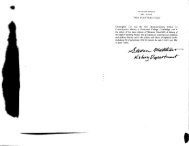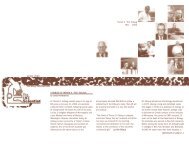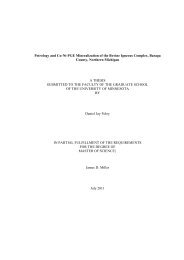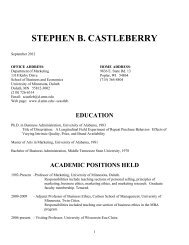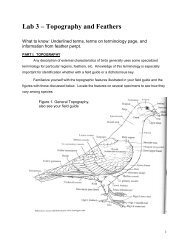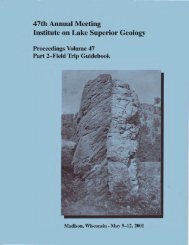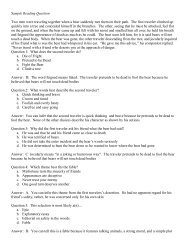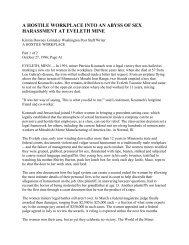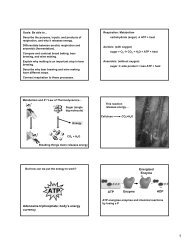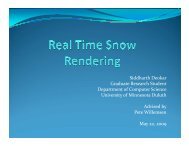POSTCRANIAL SKELETON AND LOCOMOTOR ADAPTATIONS ...
POSTCRANIAL SKELETON AND LOCOMOTOR ADAPTATIONS ...
POSTCRANIAL SKELETON AND LOCOMOTOR ADAPTATIONS ...
You also want an ePaper? Increase the reach of your titles
YUMPU automatically turns print PDFs into web optimized ePapers that Google loves.
Skull_Skeleton_Lab3.doc 09/21/09 page 20 of 43<br />
Figure 34. Lateral view of cat (Felis catus) skeleton (Hickman et al. 1997) and of a bobcat (Lynx<br />
rufus) skeleton (photograph of UMD collection specimen).<br />
Figure 35. Lateral view of a tree shrew (order Scandentia) skeleton (Vaughn 2003).<br />
The broad adaptive radiation of mammals means that many mammal skeletons do not look like<br />
the tree shrew (Fig. 35). Early mammals were four-footed (quadrupedal) and each foot had five<br />
toes (pentadactyl). Humans retain portions of the ancestral arrangement, with modifications for<br />
the bipedal gait.<br />
Stance describes the way an animal stands. Locomotion describes how an animal moves. Humans<br />
stand on the soles of the feet in a plantigrade stance. While walking and jogging, the stance is still<br />
plantigrade. When humans sprint, the stance can become digitigrade (on toes or digits). Look at<br />
the different articulated skeletons that are available and Figs. 32-35, as well as the figures and<br />
pictures below and determine if they have a digitigrade or plantigrade stance.




